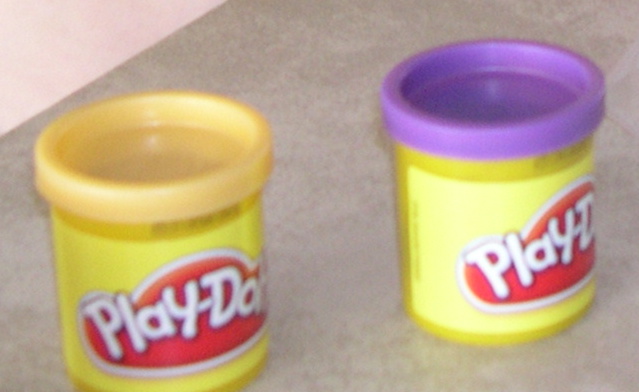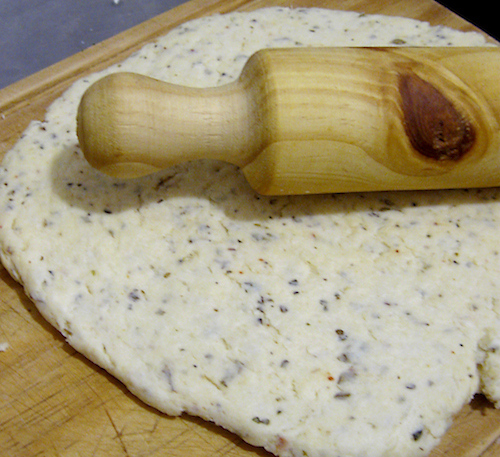Motor Activities Checklist to Encourage the Development of Pre-Braille Skills
Submitted by Gwyn McCormack on Aug 28, 2015
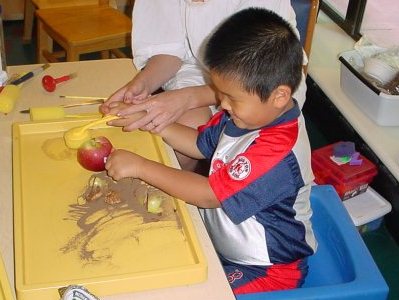
Children with visual impairments need to develop their fine motor skills through a variety of activities to increase strength and coordination needed to learn braille. This checklist provides a sequence of the pre-requisite fine motor skills:
Activity - Grasp
1. Palmer Grasp
- Squeezing toys
- Squeezing playdough / clay
- Taking objects out of containers
- Drawing
- Sanding
- Using a pastry cutter
- Using a hole puncher
- Pushing pop beads together
2. Thumb and Fingers Grasp
- Stringing beads
- Holding paper for cutting
- Using crayons / pencil / paintbrush
- Using glue sticks for art projects
- Pinching playdough / clay
- Using pegboards
- Building towers with blocks
- Painting with paintbrush
- Turning pages of a book
- Paper weaving
- Putting shapes into a shape sorter
- Sorting paper clips and small items
- Buttoning, zipping and snapping
3. Pincer
- Popping bubble wrap
- Picking up small objects
- Tying bows
- Sewing cards
- Stringing beads
- Putting pegs in pegboard
- Putting clothes pegs on edges of boxes
- Using an eyedropper
- Turning knobs on a wind-up toy
- Putting coins through a small slot
4. Release Grip
- Giving an object on request
- Stacking activities
- Sorting activities
- Placing objects in containers
Activity - Wrist Flexibility (takes places from wrist with stable arm)
1. Recognition of 3D Objects
- Matching of everyday objects
- Sorting objects - large familiar objects - by size shape
- Sorting objects - small familiar objects - by size shape
- Stacking activities / boxes / blocks / beakers
-
Bead stringing / Thread large beads onto something rigid – e.g. dowelling
Thread beads onto thick firm thread – e.g. plastic washing lineThread small beads onto shoe laceTrace holes made by hole puncher, (child makes pattern with hole puncher then traces the pattern.)
-
Assembling nuts and bolts
-
Using twist ties
-
Turning volume knobs on radio
-
Manipulating lids on and off jars / tubes
-
Mixing food in a bowl
-
Using wind-up toys
-
Turning door knobs
-
Pour from one container to another
Activity - Bilateral Hand Use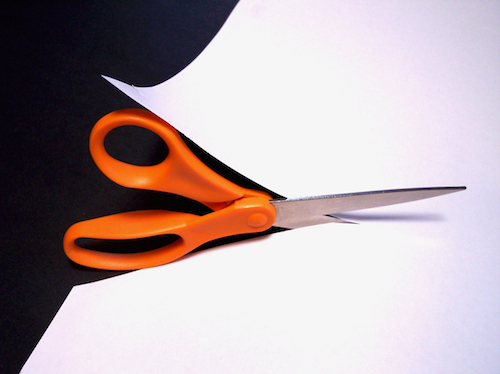
- Stringing beads
- Pulling tape off roll
- Tearing paper
- Twisting lids on and off
- Cutting paper
- Using a hole puncher
- Sanding
- Using a ruler to make lines
- Holding container with one hand and placing an object into with the other hand
- Stabilizing toy with one hand and using other hand to play with the toy
- Pushing together and pulling apart pop beads
- Finger painting
- Rolling snakes and ball with playdough / clay
- Attaching paper clips to paper
- Tracing round an object or stencil
- Holding paper with one hand stapling with the other
- Stabilising bowl whilst stirring
Activity - Hand and Finger Strength
- Crumpling paper
- Placing clothes pegs on edges of cans and jars
- Stretching rubber bands
- Manipulating play dough
- Squeezing glue bottles
- Using stapler held in hand
- Using stapler by pushing
- Using rolling pin
- Using a hold puncher
- Hammering
- Pushing together and pulling apart pop beads
- Sponge painting
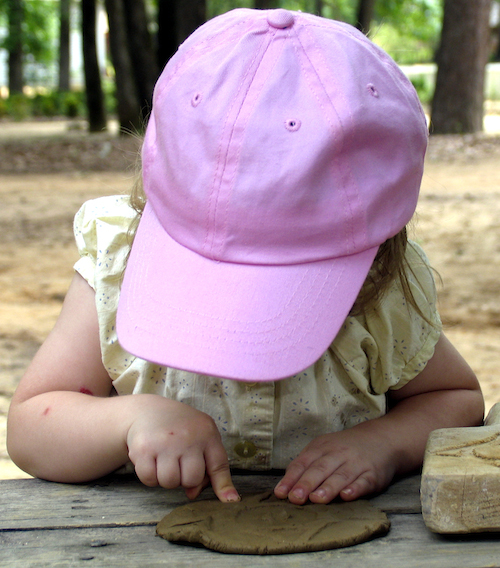 Activity - Finger Isolation
Activity - Finger Isolation
- Make finger prints in playdough/clay
- Pushing buttons on toys
- Playing musical instruments
- Tracing around stencils with fingertips
Activity - Light Touch
- Place counters inside the squares of Braille graph paper and have the child move fingers across them so lightly that they are not moved outside the squares
- Place cotton balls beneath the child’s fingers and have them move across the page
- Move counters on a surface by touching them lightly
Activity - Tracking
- Track along lines of counters, beads, buttons and pasta, differentiating between and feeling for requested button shape or odd one out.
- Track across lines of yarn, string, ribbon, straws, wikki stix
- Finding longest, shortest, track down page using scissor action
- Track across lines of Braille cells picking out odd one out.
- Tracking from left to right across like symbols which follow closely without a space
- Tracking from left to right across unlike symbols which follow closely without a space
- Tracking from left to right across like symbols which have one or two spaces between them
- Tracking from top to bottom over like symbols which follow closely without a space
- Tracking from top to bottom over unlike symbols which follow closely without a space
- Tracking from top to bottom over like symbols which have one blank space between them
- Tracking from top to bottom over unlike symbols which have one blank space between them
 Activity - Tactile Discrimination (developing the skills of recognizing and discriminating between shapes using the pad of both fingertips.)
Activity - Tactile Discrimination (developing the skills of recognizing and discriminating between shapes using the pad of both fingertips.)
- Sorting large 3D objects (hand size) By different characteristics: shape, size, textures, Cool/warm
- Sorting smaller 3D objects By different characteristics: Shape, Size, Texture, Cool/warm
- Sorting small 2D objects (less than hand size) By different characteristics: Shape, Size, Texture
- Sorting smaller 2D objects (with finger tips) By different characteristics: Shape, Size, Texture
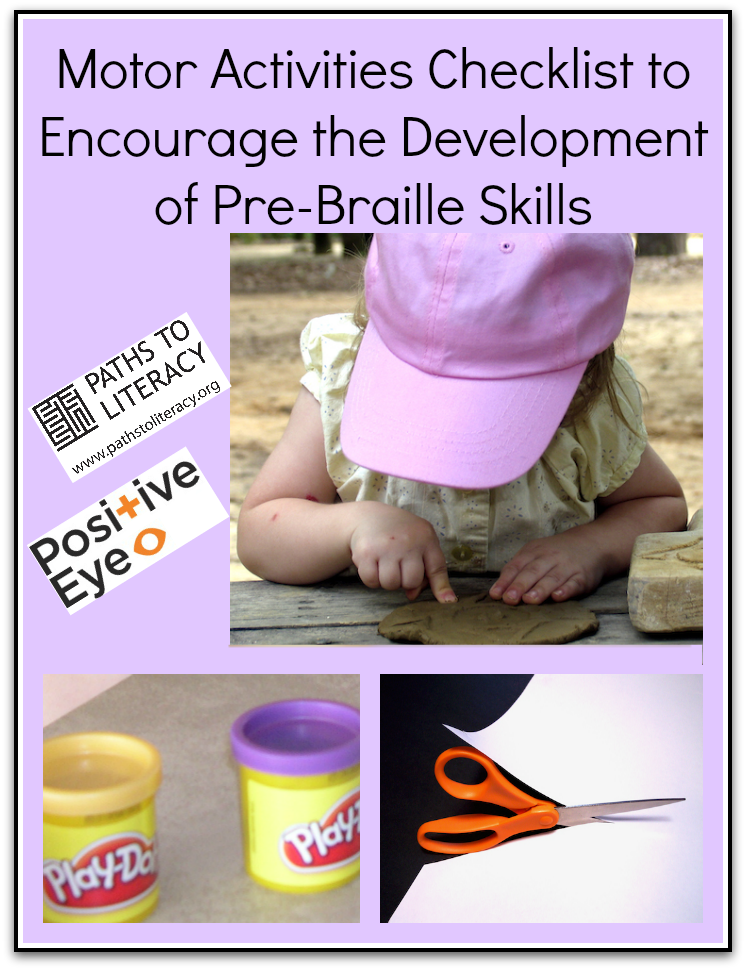
There are more shared ideas at https://positiveeye.co.uk/
Attached Files:

